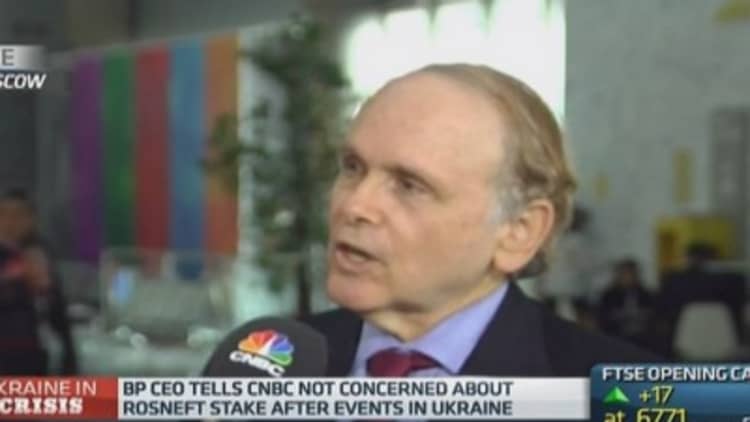Australia is set to become the largest liquefied natural gas (LNG) exporter by 2018, according to HSBC, as more production comes online.
"The long-awaited export ramp-up is almost here," economists at the bank said in a report published Thursday, pointing to two major facilities due to go online shortly.
The Queensland Curtis LNG project (QCLNG) is set to commence production before year-end and the West coast's Gorgon plant will follow suit next year. Together, these projects boast a capacity of over 24 million tons per annum - the total amount Australia exported in 2012-13.
Read MoreWhy we're so upbeat on LNG: Western Australia Premier
As a result, HSBC estimates total LNG export volumes to rise 70 percent in 2015-16, and by 42 percent a year, on average, over the next three years.
Five other projects are due to turn on the taps by 2018, which will see total Australian LNG capacity exceed 80 million tons per annum, beating Qatar's current 77 million tons. The Gulf nation is presently the world's biggest LNG exporter; Australia is the fourth largest.
Boost to growth
Increased LNG exports are expected to contribute around 0.7 percentage points to gross-domestic product (GDP) growth in each of the next three years and an average of 3 percentage points to export growth a year, HSBC notes.
Read MoreThink US natgas can threaten Russia?

"We continue to expect that the effect of the ramp-up in exports in coming years will more than offset the decline in investment as projects are completed, leaving the resources sector a positive contributor to overall GDP growth," the bank said.
Despite the LNG plants being largely foreign-owned, the economy will be supported by growth in tax revenues, since exporters pay both corporate tax and state royalties.
Assessing Australia's competitiveness
Experts have questioned the economic viability of new projects due to their high costs.
Read MorePetroChina reviews push to produce LNG: Sources
General estimates put a $200 billion price tag on new LNG capacity, roughly 13 percent of current GDP. Data from McKinsey last year showed Australian LNG operations are 20-30 percent more expensive than their North American or East African counterparts.
But a recent study from the Oxford Institute for Energy Studies highlights one key reason why Australia's new projects will remain competitive in the global market: Over 60 percent of the proposed volume is from the expansion of existing projects, called brownfield investment. That enables firms to take advantage of already developed infrastructure, leading to a raft of cost savings, including reduced site preparation and use of existing storage tanks.

"This means that brownfield expansions, even in a high cost environment such as Australia, can be very competitive in the global gas market compared with other new LNG supply sources," the report said.
The sharp decline in crude prices over the past month has also sparked doubts about LNG profitability.
Read MoreIf oil drops to $70,what will gas cost?
Over 90 percent of gas from Australian LNG projects is forward-sold on long-term contracts to Asian markets including Japan, China, India, South Korea and Taiwan. However, a look at the oil pricing formula in the Oxford Institute report shows that current prices are high enough for contracts to remain profitable.
"LNG from the Australian projects under construction was contracted on oil-related pricing formulas, with oil price floors in a range of $40-60 per barrel and ceilings of $80-110 per barrel," the Oxford report said.
On Thursday, Brent and U.S. crude traded at $86.97 and $81.96 per barrel respectively, well above the price floor.
Read MoreGoldman slashes 2015 oil price forecast
HSBC adds that Australian LNG supply volumes are likely to spike even if oil declines further due to the massive capital investment behind the projects.

